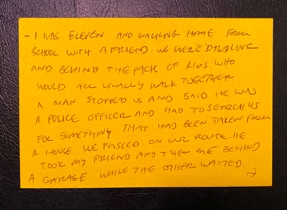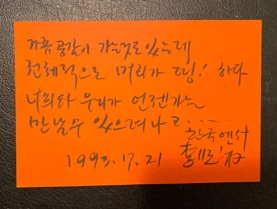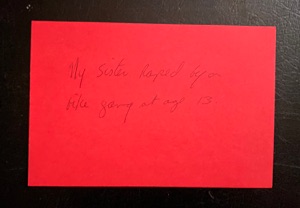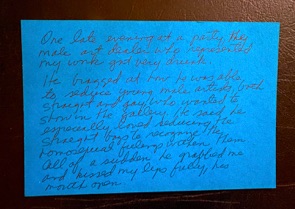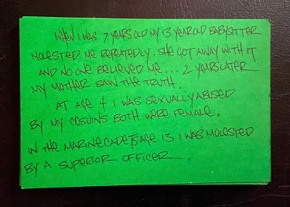The Other Side of the Rainbow provides an interactive forum that documents the experiences of contemporary women and men. This growing archive, that can be viewed and read by the public, presents the lives of individuals in their own words, on their own terms. This provides a context for experience that does not alter its expression or shape to fit prescribed meaning: it simply reveals. More than a gathering of separate testimonials, it is an expanding collective memory of our ongoing lives. The stories are written on yellow, orange, red, purple, blue, green and white index cards placed in clear plastic boxes. Providing visible evidence that documents and makes real the first person stories behind the statistics.
The topic is sexual abuse: which includes verbal and physical harassment and rape, covering the spectrum from being treated in a condescending manner to physical violation. This project reaches out to include people from, diverse racial, class and cultural backgrounds., living and working in universities, prisons, homes, streets, institutions et al. During the solicitation of testimonies on-site presentations, participants select and write on the color coded index card that relates to the age they were at the time they were sexually abused.


